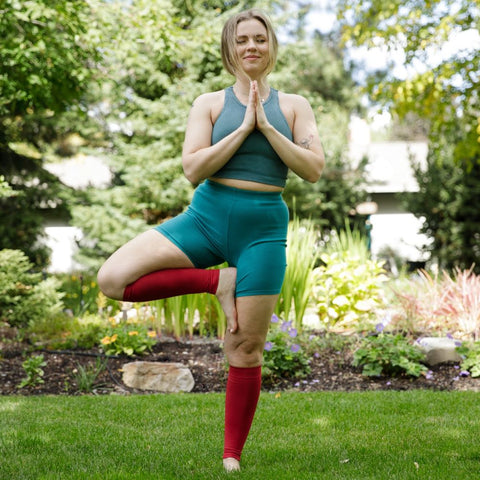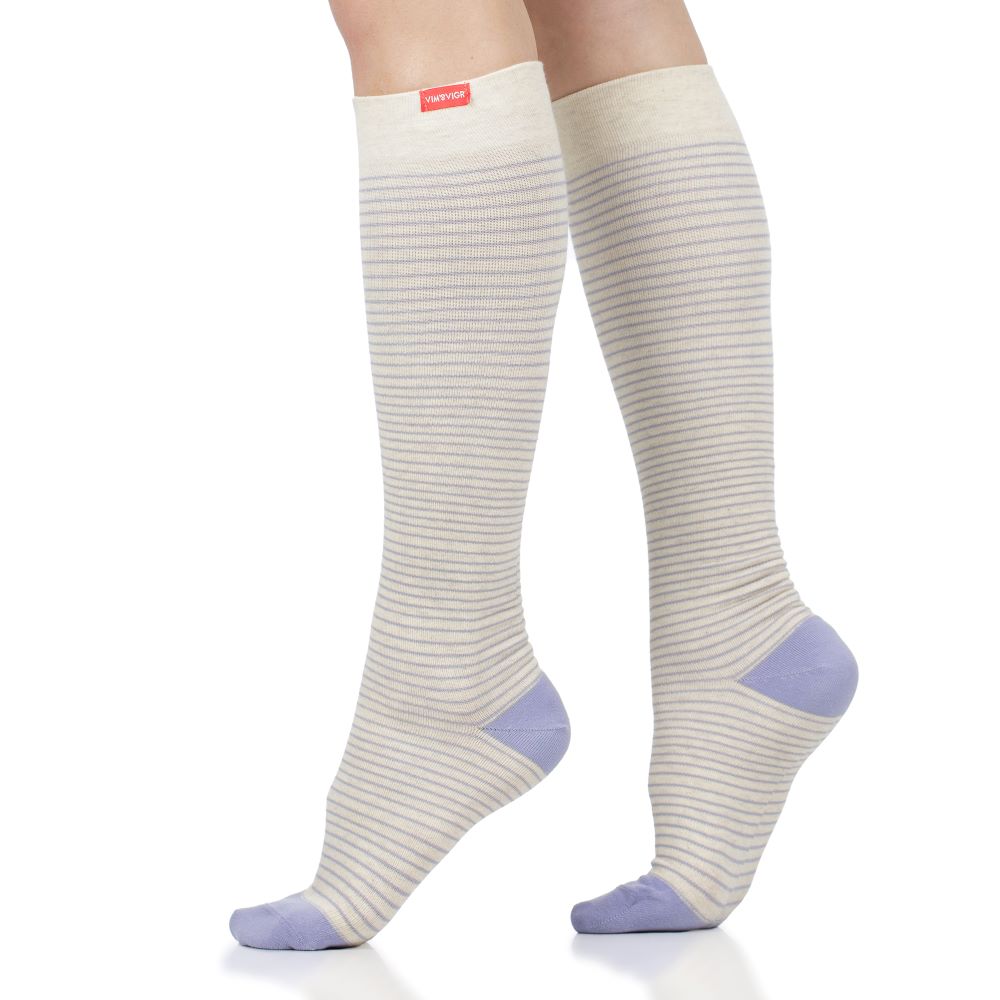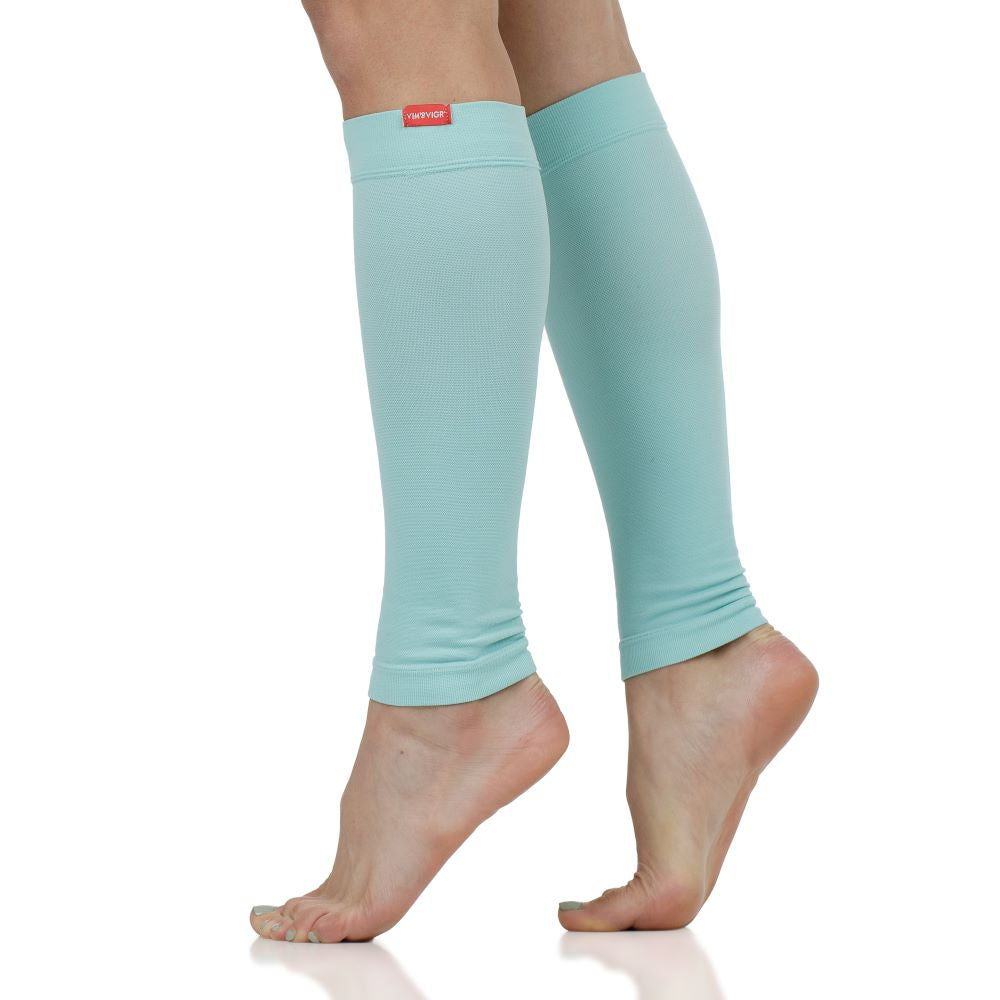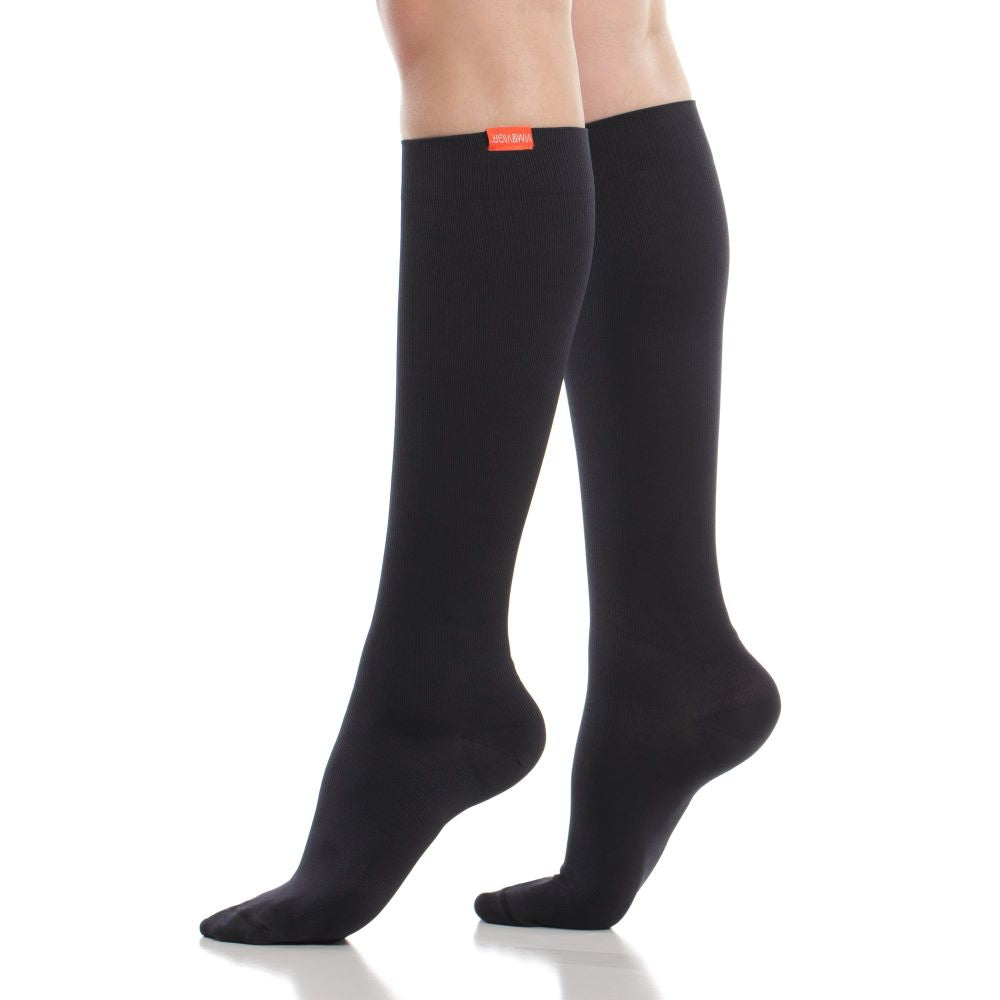Compression Socks vs Regular Socks: How Are They Different?
While many people swear by compression socks to keep their legs feeling lighter and more energized, you may be wondering how they really differ from “regular” socks. Yes, a lot of compression sock wearers first encounter them when they receive a prescription from their doctor. However, they offer many benefits for everyday wear and can help in lots of different scenarios. Regular socks aren’t designed to apply pressure - compression socks are.
Read on to find out why this pressure is important, how compression socks work, the main differences between regular and compression socks, and how to choose your first pair.
The Difference Between Compression Socks vs Regular Socks
There’s more to understanding compression socks than just Googling “tight socks vs regular socks.” That’s because compression isn’t just about wearing tight-fitting garments. While normal socks keep your feet warm and can provide some extra perks, like moisture wicking (for sport specific socks), they don’t really do anything else. Compression socks provide a number of benefits.
Firstly, compression socks apply gentle pressure to the lower legs, mostly in a graduated manner (i.e., tighter at the ankle, then gradually less tight up to below the knee). This helps boost blood flow in the legs, reducing the likelihood of them swelling and becoming uncomfortable. It also speeds up your muscles’ recovery by delivering them extra oxygen and nutrients.

The main difference between compression socks and regular socks is that the former play an important role in supporting your circulatory system and leg muscles. They are often prescribed by medics in specific cases when someone suffers from circulatory problems, as well. On the other hand, regular socks have no particular properties to enhance the wellbeing of those who wear them.
Understanding Compression Socks
So, why do we wear compression socks and what’s so special about them? Thanks to the design, which applies pressure gradually on the lower limbs, these garments boost peripheral circulation. This makes them useful for a multitude of cases, from medical conditions to everyday active life.
What Are They and What Do They Do?
Compression socks and stockings are specialized garments which compress, or apply pressure to, the lower limbs. This pressure is felt like a gentle massage, especially with moderate compression socks suitable for everyday wear. It stimulates blood flow in the legs, which in turn helps decrease the risk of developing blood clots, of swelling and discomfort, and of worsening health conditions like varicose veins or lymphedema.
Wearing compression socks after exercising or doing vigorous activities like long hikes has been shown to help support muscle recovery. It reduces inflammation and supports the transport of oxygen and nutrients to the legs, allowing you to go back to doing what you love, sooner.
Are Compression Socks Just Tight Socks?
No, in a nutshell: just wearing tight socks is not the same as wearing compression socks. The latter do feel tight, but that’s not all there is to them. The graduated compression, whereby the sock is tighter at the ankle and gradually loosens up towards the knee, stimulates blood flow back to the heart and keeps it from pooling in the lower legs. This is what makes compression socks effective against swelling, “heavy legs,” and discomfort.

While compression socks must feel tight to provide benefits, they cannot be so tight that they cut off your circulation. You should feel a gentle massage from the pressure they apply to your muscles, whereas when wearing tight “regular” socks, this is not the case.
How Compression Works
By applying pressure on the lower legs, from just below the knee down to the ankle and through the foot, compression socks stimulate circulation and offer support to the joints and muscles.
Most compression socks are graduated, which means they are the tightest at the bottom. They help push blood upwards towards the heart, preventing it from pooling in the lower legs and leading to swelling and pain.
The pressure from compression socks is also supportive. They are recommended to athletes recovering from injuries like calf or ankle sprains for this reason. Moreover, while running or playing sports with high impact on the legs (like basketball, for example), the extra support from compression socks helps reduce the vibrations through the muscles, delaying fatigue and soreness.
Medical and Therapeutic Uses
While compression socks can be worn casually, as well as to help prevent or recover from injury in athletic contexts, there are also medical uses for them. Doctors will prescribe them for patients recovering from surgery, especially when they’re bed-ridden. During long periods of inactivity, peripheral blood flow can become blocked. This increases the risk of developing blood clots, which can have serious medical consequences. Compression socks can be really helpful in preventing this.
Additionally, doctors may prescribe medical grade compression socks to those suffering from deep vein thrombosis (DVT), peripheral neuropathy, orthostatic hypotension, and more. Finally, when returning to activity after an injury to the joints or muscles in the lower legs, wearing compression socks can be beneficial thanks to the added support they provide.
Functions and Limitations of Regular Socks
Regular socks, whether designed for everyday use or for athletic activity, do not naturally apply pressure to the legs and feet. This means they only cover the limbs to keep them warm, avoid injuries (like blisters), and provide a functional layer when wearing your favorite shoes. However, there are no special characteristics in regular socks that can boost blood flow or support muscles and joints.
Moreover, compression socks are generally knee-high, covering the shins and calf muscles. This gives these areas added support during activity and also protects them from injuries like cuts and grazes. Normal socks usually only cover the leg up to above the ankle or midway up the calves, so they are less protective.
Compression Socks Vs Regular Socks: An In-Depth Comparison
What are the key differences between these types of socks, then? Here’s a comparison on each important aspect of compression socks vs regular socks.
Pressure Graduation
Compression socks are generally graduated, varying the pressure they apply to the legs. More pressure is applied to the ankle area and less just below the knee. This has an important impact on circulation, stimulating the blood moving up towards the heart, effectively fighting gravity. As a result, there is less of a chance of swelling and pain from long flights, standing on your feet all day, or being immobilized.
Regular socks don’t apply any pressure to the legs. If they are tighter, this will be felt the same way throughout the sock and there will be no specific benefit to your circulation.
Medical Benefits
Doctors prescribe compression stockings and socks to patients recovering from surgery or to those suffering from certain medical conditions. This is because of their role in boosting blood flow in the lower legs, reducing swelling and inflammation. There are no specific medical applications of regular socks.
Targeted Use
Most people will wear compression socks for specific events or in particular contexts where they need the extra joint and muscle support and, more importantly, an improvement in blood circulation. Athletes wear them to speed up recovery times in between workouts and to reduce the impact of their sport on the muscles. As described above, compression socks are also very effective in reducing the symptoms of a number of medical conditions.

Regular socks have no targeted use, on the other hand. You may find running-specific socks, for example, designed to reduce rubbing and the risk of developing blisters thanks to the material combinations and their stitching and seams. However, this is quite different from the targeted use of compression socks, where the key benefits come from the specific graduated compression design.
Should You Wear Compression Socks or Regular Socks?
Usually, most people don’t need compression socks. However, they can be very beneficial when you’re at risk of certain health problems or in scenarios where regular socks just wouldn’t provide enough support.
Groups Who Can Benefit from Compression Socks
The first group of people to benefit from compression socks are those who struggle with their circulation, in particular in the limbs. This includes:
- Those recovering from an illness where they’ve been bed-ridden, or a surgery, and not moving for extended periods of time;
- Those needing help with lymphatic drainage;
- Patients suffering from edema, venous insufficiency, deep vein thrombosis, or orthostatic hypotension;
- Pregnant women;
- People who spend long periods of time sitting or standing for work (e.g., teachers, nurses);
- Those going on long-haul flights, where they’ll be immobile for long stretches of time.
Additionally, from a muscular recovery point of view and for extra support to the joints and muscles, compression socks are beneficial to runners, hikers, players of high-impact sports (e.g., basketball, tennis), or dancers.
Wearing Compression Socks to Prevent Certain Health Issues
When sitting or standing still for a long period of time, there is a risk of blood pooling in the lower legs. This normally leads to swelling and pain, but it can also develop into a blood clot. Blood clots are dangerous because they can travel throughout the body, including your lungs. A pulmonary embolism (when you have a blood clot in the lungs) can be life threatening. Preventing this, therefore, can be life saving.

In addition to reducing the risk of blood clots, compression socks can also prevent deep vein thrombosis in the legs - when blood clots develop in a deep vein. You can also wear them to reduce inflammation and to prevent the legs going numb or getting “pins and needles.”
How to Choose Compression Socks
While the right size is essential to ensure that your compression stockings or socks apply enough pressure to your legs and feet, there are a few other things to consider when choosing the perfect pair. Here’s a quick guide.
Sizing and Fit
Ensure that your compression socks are tight enough to apply pressure and support blood circulation, but not so tight that they become uncomfortable or cut off your circulation. To do this, you will need to measure the circumference of your calf muscle and then use a sizing guide like this one.
Compression Level
The pressure applied by compression socks comes in different levels, depending on your requirements:
- Moderate (15-20 mmHg): everyday use socks, that you can keep on as long as you’d like and for which you don’t need a doctor’s prescription;
- Firmer (20-30 mmHg): these are usually prescribed by a medical professional and used for edema, DVT, after surgery, or when you suffer from varicose veins;
- Medical grade (30-40 mmHg): prescription-only socks that treat venous insufficiency, DVT, and lymphedema.
For first-time users, moderate compression socks are ideal and will allow you to get used to the feeling, gradually increasing the length of time you wear them as well.
Material and Style
Finally, it’s important to choose the material and style of compression garments that fit with your lifestyle and activities. Compression socks are usually made of the following:
And there are several styles of garments that fall under the compression socks category:



















Leave a comment